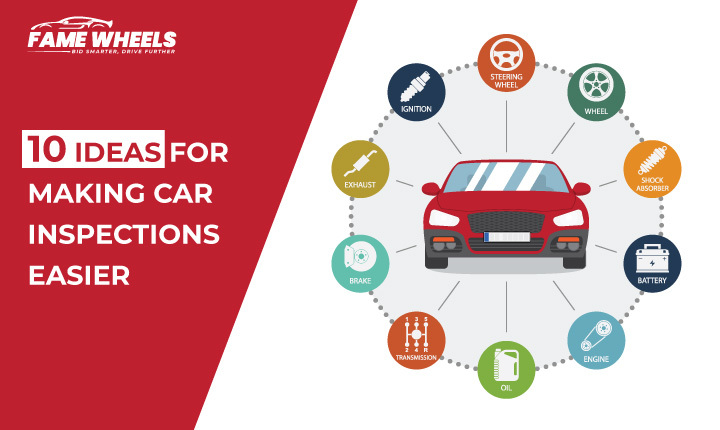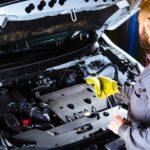What is a car inspection? What are some techniques to inspect a car for your ease? An automobile inspection is a procedure used to evaluate a car’s general state. It is carried out to assess a vehicle’s operating needs, including those related to maintenance, repairs, and replacements. These checklists offer an impartial way to assess a car’s safety, protecting the shop’s reputation in the process and check a smooth ride with car inspection in Karachi to guarantee your vehicle’s reliability and safety.. Consumers depend on your shop’s experience to maintain their cars operating safely and smoothly, and car inspections are the essential service that let you see problems early and make precise recommendations.
Need Of Inspection
Vehicle inspection checklists establish a defined procedure that your technicians may adhere to, giving inspections a methodical and ordered approach. This arrangement makes it possible to guarantee that every important part from the tires and fluids to the brakes and engine is properly inspected. By taking a thorough approach, you can handle possible concerns before they become large, expensive problems and lower the likelihood that you will overlook them. It’s similar to a health check for your automobile and you are also book FameWheels car inspection in Karachi for reliability and performance
1. Digital Checklists
Digital inspection applications are creative ways to streamline and improve the process of assessing a car’s state; they are handy tools that enable auto owners, mechanics, or inspectors to conduct thorough inspections right from their smartphones. They frequently include interactive checklists that assist users in locating and evaluating important components, such as the engine, brakes, and the vehicle’s exterior and interior.
2. Automated Diagnostic Tool
Vehicle inspections are being transformed by automated diagnostic tools. They save time and improve inspection efficiency by quickly scanning the vehicle’s systems and providing instant feedback on potential issues. It’s like having a high-tech assistant who decodes your car’s health in a matter of seconds, ensuring a thorough and timely evaluation.
3. Online Collaborative Platforms
Consider an internet-based center where auto enthusiasts, technicians, and examiners collaborate. These cooperative platforms enable easy advice-seeking, information-sharing, and community-driven knowledge base access. Like a virtual garage, it connects people for easier, better-informed car care by leveraging collective wisdom to streamline the inspection process.
4. Physical Inspection
A thorough vehicle inspection can be performed manually up until this point. However, occasionally, an accident’s impact for example, a flood can result in damage that is invisible to the naked eye. This covers aging car parts, rusting, loose wires, and moisture damage. The car would have to be disassembled in order to reveal this damage! An inspector would obviously prefer to avoid doing this, barring a few extreme cases. These checklists cover mirrors, windshields, taillights, fenders, doors, tires (for tread depth or grip), and the interior, including the steering wheel, gear shift, windows, and even under the hood for leaks or out.
5. Empower Yourself with Knowledge
By arming yourself with information, you can unlock the potential of auto maintenance. It’s like having a secret weapon for dealing with unforeseen automotive problems. Learn the fundamentals of your car’s inner workings, from interpreting the dashboard lights to identifying the critical components under the hood. Learning is the key to driving with confidence. Consider being able to spot tiny problems before they become large headaches. You become the captain of your automotive adventure by educating yourself, making informed decisions that keep your vehicle in top shape. So enter into the world of automotive knowledge and see your confidence grow behind the wheel.
6. Engine And Fluid Checkup
The vehicle’s heart is meticulously evaluated. This involves checking for leaks, examining belts and hoses, and ensuring that all engine components are functioning properly, and checking various fluid levels, such as engine oil, transmission fluid, coolant, power steering fluid, and brake fluid, is typically included on vehicle inspection checklists.
7. Brakes Assessment
Brake system inspection is required to ensure safe driving conditions. During a brake inspection, the complete brake operation is examined, including the brake pedal, brake liquid, brake pipes and hoses, and brake assemblies. Look for evidence of wear and tear on the brake pads and discs.
8. Shaft And Steering Inspection
CV axle joints, which are located near the wheels of your vehicle, have an instant impact on how you drive. Consider them the unsung heroes who keep your wheels turning smoothly. These joints are protected from damage by a rubber boot that acts as a guardian, allowing for smooth wheel movement. You may see a decrease in steering performance if this shield is damaged. When turning, keep an ear out for a sudden, loud connection, since this might indicate a ruptured CV joint. That’s not all, though. For best performance, these joints are lavished with oil. It’s possible for your wheels to leak oil if the boot is broken. It’s like a subtle hint not as spectacular as an unexpected click, but nonetheless a strong indication that any doubts regarding.
9. Exhaust System Inspection
They start at the engine’s combustion chambers and travel underneath the car until they terminate at the tailpipe that is visible. Exhaust manifolds, oxygen sensors, catalytic converters, resonators, exhaust pipes, mufflers, and tailpipes are among its components. Visually inspect for rust and damage, listen for unusual noises or smells, and ensure secure mounts for a quick exhaust system check. Keep an eye on the catalytic converter and the oxygen sensors. Examine the connections for leaks. If in doubt, seek professional inspection to ensure optimal vehicle performance and compliance with emissions regulations.
10. Wheel Examination
The condition of the tires and wheels is frequently at the top of the priority list. Inspecting tire tread, tire pressure, and the overall condition of the wheels, such as any signs of damage or misalignment, is part of this process.
Conclusion
There are various automobile inspection tips that we may use to keep both our own safety and the health of our vehicle. Automated diagnostic tools, digital checklists, and using your own expertise are all helpful when examining an automobile. We can prolong the life of our car and make it a better friend by arming ourselves with information and performing routine maintenance on vital parts like the brakes, wheels, engines, fluid, and steering.








